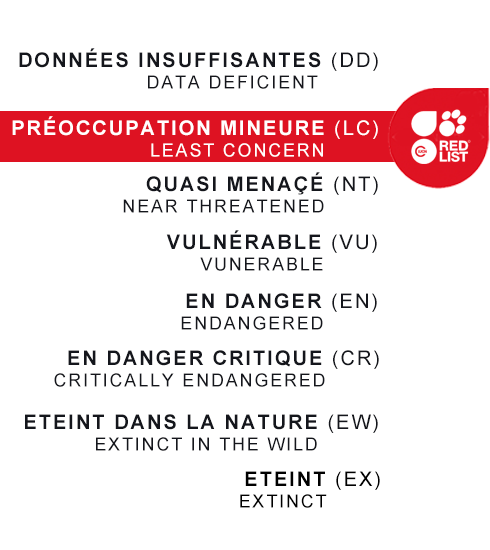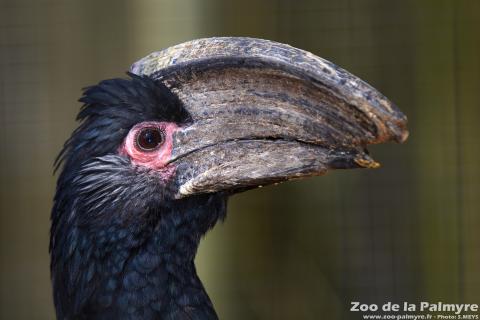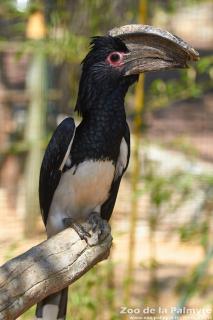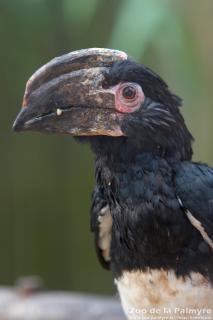Trumpeter Hornbill
Trumpeter Hornbill
Bycanistes bucinator

Trumpeter Hornbill
Trumpeter Hornbill
Bycanistes bucinator

-
Class
Aves -
Order
Coraciiformes -
Familly
Bucerotidae
-
 50-55cm
50-55cm -
 ♂ 600-900g, ♀ 450-670g
♂ 600-900g, ♀ 450-670g -
 28 days
28 days -
 2-4
2-4 -
 40 years
40 years
-
Diet
(mainly fruit – especially figs – but also insects, small birds, millipedes…) -
Habitat
forests -
Range
Southern Africa (from Namibia to Kenya) -
Population in the wild
En diminution -
IUCN REDLIST status


Male Trumpeter Hornbills swallow mud and turn it into little balls that they regurgitate to females to help them seal the openings of their nests. Females remain in the nest all through incubation and for several weeks after the eggs have hatched, relying solely on the male for food.
The very loud cries of male Trumpeter Hornbills sound like a baby’s wails. Their casques are much larger than the females’. They function mainly as a soundbox, amplifying the vibrations of the vocal chords, similarly to the sound inside violins.
Male hornbills swallow several fruits and carry them in their oesophagus then regurgitate them into their beak one by one to give them to the females and to the young inside the nest.





